#curbweight
Explore tagged Tumblr posts
Photo
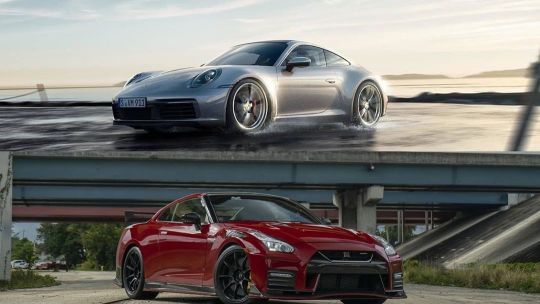
Must See: A 700-Horsepower Nissan GT-R And A Porsche 911 Duke It Out On The Drag Strip @ Top Speed horsepower and torque are extremely important when it comes to drag racing but curb weight can also make a big difference. in short power-to-weight (...) https://www.topspeed.com/cars/car-news/must-see-a-700-horsepower-nissan-gt-r-and-a-porsche-911-duke-it-out-on-the-drag-strip-ar188833.html?utm_source=feedburner&utm_medium=feed&utm_campaign=Feed%3A+topspeed+%28TopSpeed.com%29 #porsche911 #porsche #911 #nissangtr #nissan #gtr #powertoweight #powertoweightratio #kerbweight #curbweight #dragracing #dragracinglife #dragracinglifestyle #horsepower #torque #700bhp #700bhpclub (at Papa Smith Custom) https://www.instagram.com/p/CCMR-WPnqcT/?igshid=1icnj0r54kd7v
#porsche911#porsche#911#nissangtr#nissan#gtr#powertoweight#powertoweightratio#kerbweight#curbweight#dragracing#dragracinglife#dragracinglifestyle#horsepower#torque#700bhp#700bhpclub
0 notes
Photo
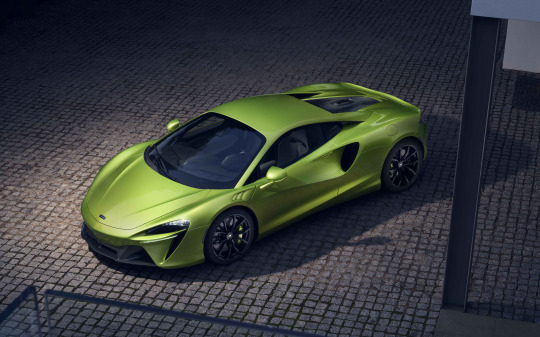
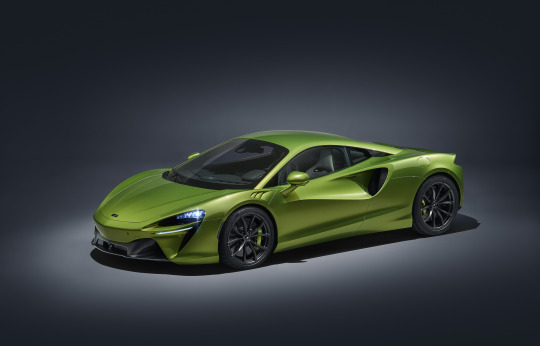
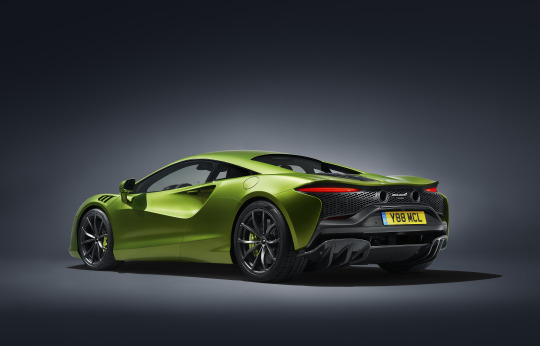
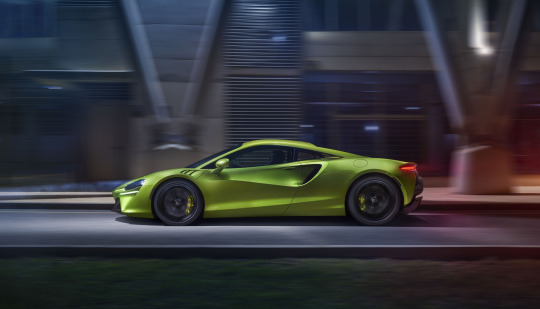
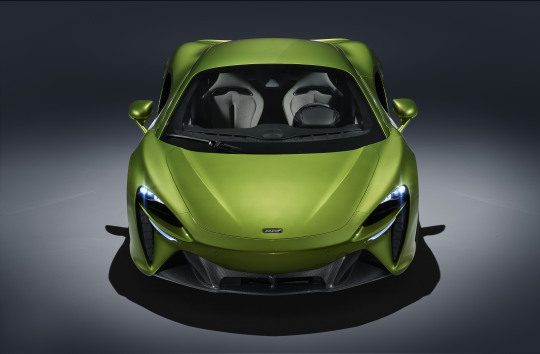
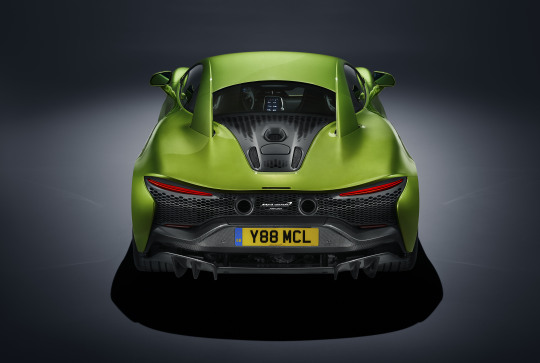
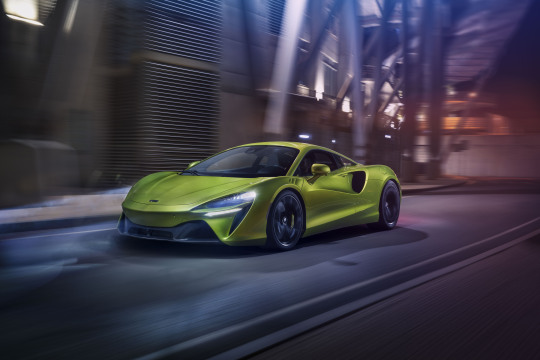
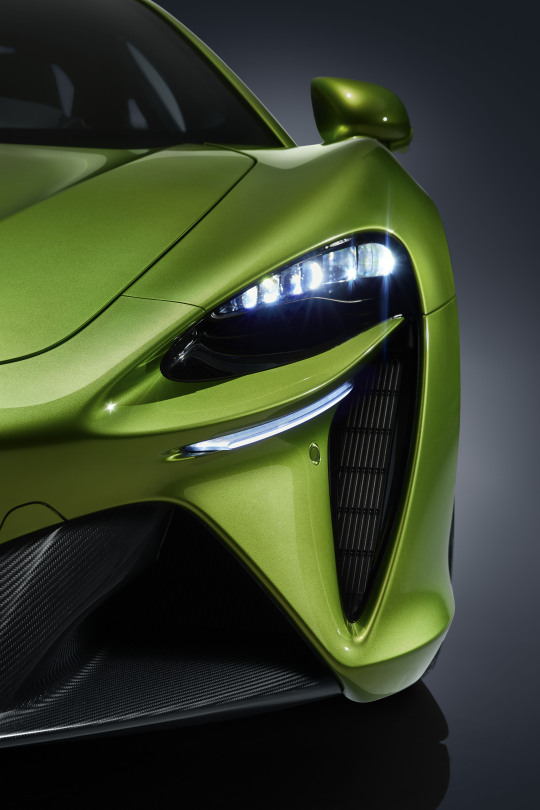
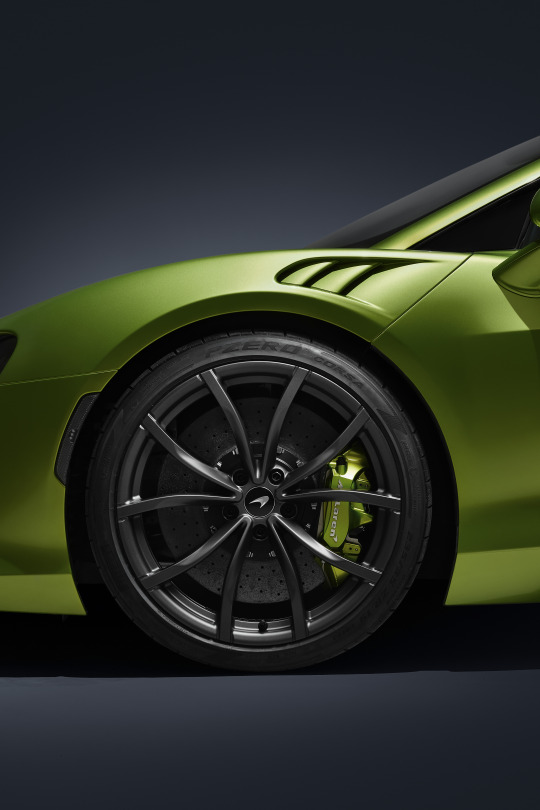
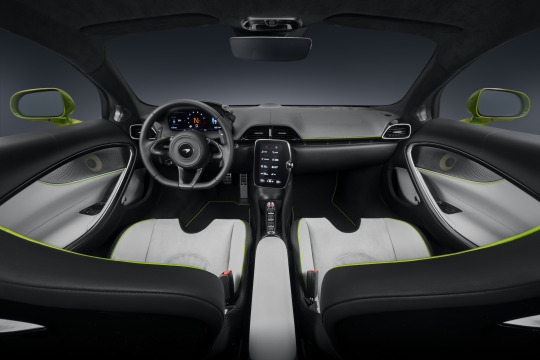
First Look: The McLaren Artura
The all-new McLaren Artura is revealed today, marking the beginning of both a new chapter for the pioneering luxury supercar company and a new era in supercar technology and performance.
McLaren’s first series-production High-Performance Hybrid supercar focuses more than half a century of the company’s racing and road-car experience and expertise into a next-generation supercar that blends ground-breaking technology with pure driver engagement.
Underpinned by the McLaren philosophy of super-lightweight engineering, the all-new Artura is the distillation of every attribute inherent in a McLaren – distinctive design, unrivalled performance, dynamic excellence and engineering innovation – with electrification now bringing the additional benefits of even faster throttle response, lower emissions and being able to run in pure EV mode for emissions-free journeys of up to 30km.
All-new from the ground up, the Artura presented McLaren engineers and designers with new opportunities to innovate, chief among these being how to preserve McLaren’s super-lightweight engineering philosophy when adding hybrid powertrain elements including an E-motor and battery pack.
At the heart of the Artura’s powertrain is McLaren’s all-new, 2,993cc twin-turbocharged V6 petrol engine. With a power output of 585PS – nearly 200 PS per litre – and 585Nm of torque, the dry-sump aluminum engine is compact and lightweight; at just 160kg it weighs 50kg less than a McLaren V8 and is significantly shorter, enhancing packaging efficiency.
Working in harmony with the new V6 is the Artura’s compact axial flux E-motor, located within the transmission bell housing. Smaller and more power-dense than a conventional radial flux E-motor, it is capable of generating 95PS and 225Nm and boasts a power density per kilo 33% greater than the system used in the McLaren P1. The instantaneous nature of the motor’s torque delivery – known as ‘torque infill’ – is key to the car’s razor-sharp throttle response. Exhilarating ‘off-the-line’ performance sees the Artura achieve 0-100km/h (0-62mph) in just 3.0 seconds, with 0-200km/h (0-124mph) taking 8.3 seconds and 0-300km/h (0-186mph) 21.5 seconds. The top speed is limited to 330km/h (205mph).
A demanding program of weight reduction, encompassing every area of the Artura from the chassis platform – this is the debut of the new McLaren Carbon Lightweight Architecture (MCLA) – through the uniquely compact HPH powertrain system to the weight of cabling used in the electrical systems (where a 10% reduction was achieved), resulted in the Artura having a lightest dry weight of 1,395kg. The total weight of hybrid components is just 130kg (which includes an 88kg battery pack and 15.4kg E-motor), resulting in a DIN curbweight of 1,498kg* which is on par with comparable supercars that do not have hybrid powertrains, giving the Artura a super-lightweight advantage.
145 notes
·
View notes
Text
Objective: Relation between car Body Style and Drive Wheel
As a part of Assignment for Course: Data Analysis Tools
Here we are going to identify the trend between 4 wheel drive, front wheel drive and rear wheel drive against different body styles like Sedan, Hatchback etc. using Chi Square test.
i.e. Observing relation between 2 categories
Here Body Style has 5 levels and Drive Wheel Types has 3 levels.
Steps:
Loaded car data in dataFrame
Created Pivot (similar to crosstab), for BodyStyles as Index and DriveWheels as Columns with Values as Count of DriveWheels per BodyStyle
Converted to Percentage format for making this information more relevant
Calculated Chi square values using Seaborn library, the high value of F value obtained and low value of p shows that dependency exists
For further analysis, used Seaborn’s pointplot function and matplotlib library for presenting the trend. Added legends with additional set of code for usage of Seaborn with MatplotLib
Conducted post hoc test for selected combinations
-Pivot table screen-shot

-Pivot’s percentage (with roundoff to 2 decimals) screen-shot

-Chi square values screen-shot (showing high F Value and low p-value)

-Seaborn pointplot for independent category (all levels) and dependent category (all levels)

* This plot gives us ideas like:
Sedans and hatchbacks are mostly Front Wheel Drive and rarely 4 wheel drive.
Convertibles and Hardtops are mostly Real Wheel Drive.
Presence of 4 wheel drives are less in all categories.
Post Hoc Test Conclusions for selected combinations:
- Since the p-value can be rounded off to 0.003 which is in acceptable range, we can conclude that majority of the Hatchbacks are Front Wheel Drives and majority of the Hardtops are Rear Wheel Drive

- Since the p-value is high, we accept the null hypothesis concluding that there is no relationship between sedan or wagon being front wheel drive or a rear wheel drive

Code:
import numpy import pandas import scipy.stats import seaborn import matplotlib.pyplot # Loading car data to data frame df = pandas.read_csv('CarTrendData.csv', header=None) headers = ['Symboling', 'NormalisedLosses', 'Make', 'FuelType', 'Aspiration', 'Numofdoors', 'BodyStyle', 'DriveWheels', 'EngineLocation', 'WheelBase', 'Length', 'Width', 'Height', 'CurbWeight', 'EngineType', 'NumofCylinders', 'EngineSize', 'FuelSystem', 'Bore', 'Stroke', 'CompressionRatio', 'HorsePower', 'PeakRPM', 'CityMPG', 'HighwayMPG', 'Price'] df.columns = headers df.to_csv('CarTrendData_Base.csv') # To study how BodyStyles of car are related to Drive Wheel Category # Pivot Code to get counts ctl = df.pivot_table(values='Price', index='BodyStyle', columns='DriveWheels', aggfunc=numpy.size, fill_value=0) print('\nPivot Method \n' + str(ctl)) # column percentages colsum = ctl.sum(axis=0) colpct = round(ctl / colsum, 2) print('\nPercentage \n' + str(colpct)) # chi-square print('\n\nchi-square value, p value, expected counts') cs1 = scipy.stats.chi2_contingency(ctl) print(cs1) ctl['BodyStyle'] = ctl.index seaborn.pointplot(x='BodyStyle', y='4wd', data=ctl, color='green', label='4wd') seaborn.pointplot(x='BodyStyle', y='fwd', data=ctl, color='#1F04FF', label='fwd') seaborn.pointplot(x='BodyStyle', y='rwd', data=ctl, color='#bb3f3f', label='rwd') matplotlib.pyplot.legend(labels=['4wd', 'fwd', 'rwd']) # , color=['#00639c','#1F04FF','#bb3f3f']) ax = matplotlib.pyplot.gca() leg = ax.get_legend() leg.legendHandles[0].set_color('green') leg.legendHandles[1].set_color('#1F04FF') leg.legendHandles[2].set_color('#bb3f3f') matplotlib.pyplot.ylabel('Rear Wheel Drive') matplotlib.pyplot.xlabel('Body Style') matplotlib.pyplot.show() # post hoc test for selected combinations print('\nFor relation between HardTop & Hatchback on Rear wheel drive and Front Wheel Drive') ctl = df.pivot_table(values='Price', index='BodyStyle', columns='DriveWheels', aggfunc=numpy.size, fill_value=0) ctl = ctl[['fwd', 'rwd']].query('BodyStyle == ["hatchback","hardtop"]') print('Pivot Method \n' + str(ctl)) # column percentages colsum = ctl.sum(axis=0) colpct = round(ctl / colsum, 2) print('\nPercentage \n' + str(colpct)) # chi-square print('\n\nchi-square value, p value, expected counts') cs1 = scipy.stats.chi2_contingency(ctl) print(cs1) print('\nFor relation between Wagon & Sedan on Rear wheel drive and Front Wheel Drive') ctl = df.pivot_table(values='Price', index='BodyStyle', columns='DriveWheels', aggfunc=numpy.size, fill_value=0) ctl = ctl[['fwd', 'rwd']].query('BodyStyle == ["wagon","sedan"]') print('Pivot Method \n' + str(ctl)) # column percentages colsum = ctl.sum(axis=0) colpct = round(ctl / colsum, 2) print('\nPercentage \n' + str(colpct)) # chi-square print('\n\nchi-square value, p value, expected counts') cs1 = scipy.stats.chi2_contingency(ctl) print(cs1)
0 notes
Text
Big & Tall Car Review: 2017 ND Mazda MX-5 (Miata) RF Club. Crushing My Hopes & Dreams.


If you’re reading my review of the 2017 ND Miata, I shall assume that this isn’t the first time you’ve elicited cursory information on the world’s most ubiquitous roadster. I shall therefore, attempt to present my opinions devoid of the most obvious statistics & observations you have likely already heard/read ad nauseam.
First off, I feel it necessary to elaborate on the specific review format herein which is unique to me. As previously mentioned, I am not a small fellow. In fact, I am quite sure I exceed Mr. Matt Farah’s dimensions in every quantifiable measure at 6′4″ tall & nearly 300lbs. With that in mind, it has become my mission for the reviews on this blog to give an accurate account of just how comfortable or uncomfortable I am in any given automobile.
Rest assured though, I will cover all pertinent areas of the car including, but not limited to interior & exterior impressions, practicality-which will lump in safety, predicted reliability, efficiency, & price/value-as a poor showing in any of those areas would thus make the car impractical in my opinion, & noteworthy features or technology that help diferentiate it from it’s competitors. With that all out of the way, please allow me to set the stage for you, dear reader.
It is the doldrums of winter in South Jersey. I am eagerly anticipating the approaching 2018 Philadelphia Auto Show. I generally make a habit of going every year as you might imagine I find it quite entertaining. This year, I managed to score a pair of free tickets from a friendly, local VW dealership. I was prepared with a list of various makes & models I specifcally wanted to check out, as well as a map of the event floor & my plotted course pre-planned to maximize efficiency.
I admit, in prior years & visits to many auto shows, I never paid the Mazda MX-5′s any real attention. But, the new ND generation has captivated me since I first laid eyes upon it. I’d always considered previous iterations as too slow, too small, too rental car inside. All assumptions, I must confess, as I still have not driven one. Yes, that’s right, I have not driven an MX-5 of any vintage, new or old. Allow me to explain...
I am quite literally too big to drive the Mazda MX-5. At least, the current ND version anyway. I have never even attempted to situate myself into the driver’s seat of an NA, NB, or NC to be honest. I was however, astonishingly & hilariously able to shoehorn myself into the driver’s seat of the ND with only marginal effort, truthfully.
So, what gives? Why don’t I fit, you ask? Well, when I attempted to simulate changing gears & operating all 3 pedals, I found that my knees consistently & significantly impacted on the backside of the steering wheel. And, I should also mention, that this occurred in both the soft-top & RF (Retractable Fastback) models Mazda had on display.
Additionally, I found that the soft-top reduced my headroom to nill. I was indeed pushing firmly up against the inside of the fabric top. This surprised me, as I had heard & read on other automotive outlets that the RF, in fact, was the stingiest of the pair in the headroom department.
I found this to be quite the opposite when I slid into the RF & immediately engaged the folding hardtop in it’s closing operation. If my legs were capable of operating the pedals without contacting the steering wheel, the RF would undoubtedly be my choice among the two as I could actually sit quite comfortably within its cozy confines.
So, if you happen to be perhaps a smidge shorter in the leg department than I, you may be lucky enough to find that you are capable of comfortably operating either of these popular sports cars more comfrotably than you might have imagined. Now, the rest of the review.
The exterior of the current ND MX-5 is quite strikingly beautiful to my eyes. I recognize there are Miata purists out there who take issue with its squinty/angry headlights, or argue the circular portions of it of its taillights are too far inboard of the rear fenders. With them, I must respectfully disagree, or at least declare myself not as nitpicky. I love this car from just about every angle I have seen it in.
Though, color choice does make all the difference, as it does in most cases that I have observed. As such, I do not care for the dark metallic gray available. I much prefer the wonderfully metallic red, dark blue, & even the silverish-white. Typically, I am not as big a fan of the monochromatic offerings, particularly shades of gray.
I am indeed a sucker for bright colors, & this is where I think the MX-5 misses a key opportunity to distinguish itself even more amongst the crowd, not that it has a plethora of competitors at the moment, but why can’t we get a really bright blue, or orange, or yellow? I bet those would all be popular choices among potential MX-5 buyers.
I can’t help wondering what either the soft-top or the RF would look like in something so bright only a true sports car could pull it off. I just think it would make this fun, affordable sports car that much more endearing to its owners as well as those who encounter it, if it offered a color palette as splashy as say the Fiat 500 Abarth.
Beyond my prior assertions about the commodity that is interior space in the MX-5, I found the cabin a very pleasant place to be for the most part. Materials were quite nice & had a luxurious feel to them. Everything was ergonomically laid out by and large.
My gripes? I think the instrument cluster from the Mazda3 GT is superior in its readability & funtionality. I prefer having a digital speedo represented in the LCD display of the center-mounted tach, as opposed to having gear selection information presented therein. I likewise found the analog speedo to the right more difficult to read than the tach. A problem that would be easily remedied by utilizing the aforementioned portion of the tach to digitally display the speedo. This would free up more real estate to install more pertinent performance driving gauges such as oil temp. & pressure info, or battery status, or something else fun & unique.
I personally think the cloth seats should also have heating elements as they are quite desirable to have in a roadster such as this. Let’s face it, a lot of MX-5 buyers do daily these cars & would no doubt really appreciate this sort of creature comfort.
I wish this car could be optioned with an infotainment delete of sorts. Or perhaps a more basic headunit with a small dot-matrix style display, no app support or satellite radio, no navigation, etc. Something very basic, if not completely nonexistent. Hell, you could market it as additional weight reduction, & most MX-5 buyers would be happy about that.
I feel that a lot of people who buy this car, buy it as a toy. They don’t value such creature comforts & technology as much. They care much more about the experience of actually driving & feeling they are in harmony with their cars. Modern infotainment thus serves as a distraction from that purist’s dream, & is quite antithetical to the MX-5′s mission statement. Doesn’t the melodious thrum of the 2.0L 4-pot through it’s aluminum intake manifold & dual-outlet exhaust provide an adequate soundtrack to get your blood pumping? Again, I feel this is a missed opportunity, Mazda.
My closing statements on the interior include the afterthought that was the command & volume knob placement. That needs a serious re-evaluation as they are both easily & inadvertantly bumped while shifting or even just resting your arm. I’m totally OK with the movable cupholders though. And, I feel the dearth of storage is acceptable in such a car as this. If you need storage, get a hatchback or a wagon.
This car has a singular mission, to put a smile on the driver’s face every second they are behind the wheel. A mission that nearly all reviewers agree it successfully executes year-after-year. I feel more fat could have been trimmed from the new ND examples though, and it would only have improved their ability to execute.
Moving on to practicality-this should be a short read! Safety? Well, it’s hardly bigger or heavier than the go-kart you had in 5th grade, and being a roadster, you can surmise it won’t envelop you in a cocoon of airbags if the proverbial fecal matter impacts the fan, so what do you think safety is going to be like, realistically?
Storage space? Well we did briefly touch on it already, but I didn’t mention that you only need one hand with 5 fingers to count the number of cubic feet that are available in the trunk. Did I mention that it has no glovebox? And, the center-console storage is laughable. It has just enough room for maybe a medium-sized suitcase or a couple dufflebags. It won’t hold a weeks worth of groceries, & the storage cubbies behind the seats will not be easily or safely accessed while the car is moving. And, good look reaching the cupholder(s) behind you or not spilling a drink located behind you when you bump it with your elbow while shifting.
But, all of this is a non-issue, really. Again, because practicality is not this car’s mission. A lot can be forgiven when you look at what makes this car truly special from an enthuisiast’s perspective.
Fuel-efficiency is the big win here. The ND has demonstrated itself to be superb in this regard easily attaining 30mpg combined or better in everything I’ve read, or heard. And, the practical benefits don’t stop there.
This car’s exceptionally light curbweight means it can operate with tiny brakes & tires in addition to its fuel-sipping prowess. Tiny brakes & tiny tires are much more inexpensive to replace than their monstrous counterparts that you will find on more portly sports cars such as the Corvette, Camaro, or Mustang. Honestly, these brakes & tires are likely smaller than what’s currently installed on your Mom’s Toyonda Camcord, yet they are just as effective at doing their jobs thanks to the overall light weight of the car.
Additionally, the fact that this car operates without the complexity of forced-induction or a larger displacement V6 or V8, means it will be easier & cheaper to work on.
If history teaches us anything about this MX-5′s expected reliability, it’s that it will likely be near bulletproof. The NA, NB, & NC generations have shown themselves to be among the most steadfastly reliable cars ever produced. The fact that they’re purpose-built sports cars only makes their reputation for durability that much more impressive.
That being said, the all-new 6-speed manual found in the ND has experienced some hiccups at least in the ealier production runs of MY2017. Expect a fix for this going forward, or play it extra safe & wait for a MY2018 or newer MX-5.
On the whole, I can’t imagine that the ND will not be a solidly reliable & inexpensive to operate machine. In fact, it will undoubtedly provide economy car levels of frugailty & maintenance expenses.
That is probably one of its greatest appeals to enthusiasts. The MX-5 can be had for relatively little money compared to other genuine sports cars on the market, without sacrificing low overall cost of ownership, which for Miatas, has been historically much lower than the majority of competitors past or present thanks to Mazda’s committment to lightweight simplicity.
The fact that it can do all of this while still providing superior levels of driver engagement & enjoyment is a testment to its nearly 3 decades of overwhelming sales success. I just wouldn’t buy one new, because then I think they can get a bit expesive for what they are. There are some great deals to be had on preowned ND’s as well as prior generations if you fancy them more.
Laslty, if you fear the ND will be too slow for you with it’s diminutive 155hp, just know that it is geared extremely agressively & weighs less than almost anything else on sale today (as little as 2300ish lbs. in some trims). It will therefore, accelerate more agressively when compared to the gear ratios you might find in say a Golf GTI for example.
I remember reading that at least one of the major magazine publications was able to coax a 5.8 second 0-60mph run out of an ND Club trim with the lightweight BBS wheels. That is genuinely quick in my book, I don’t know about yours.
So, depsite the fact that I can’t operate one myself, I would be remiss were I not to at the very least prompt you to go take an ND MX-5 out for a test drive to discern whether it’s the sort of driving pleasure you’re after. In the meantime, I’ll just sit here hoping the next (NE?) MX-5 will offer just a tad more room and/or adjustment in the steering wheel positioning. I have a sneaking suspicion it’s first 4 iterations may just be the most fun I’ll never have.
#Mazda#Miata#MX-5#RF#Club#The answer to everything#roadster#convertible#BBS wheels#smiles per gallon#Chris Harris hates me
0 notes
Text
Audi R8 V10 RWS adds rear-wheel drive to Ingolstadt’s supercar
It’s been a big day for BMW’s competitors and their supercars. First it was Mercedes-AMG with its Project One and now it’s Audi. Ever since former Audi Sport Boss, Stephan Winkelmann, teased the idea of a rear-wheel drive Audi Sport model, fans have been toying with the idea in their minds. “Would a rear-wheel drive Audi defeat the entire purpose of an Audi?” Admittedly, rear-wheel drive is the best way to get a pure, connected driving experience, the sort that enthusiasts love. However, it’s just not normally the Audi way. Audis are about Quattro all-wheel drive and tenacious grip. In theory, a rear-wheel drive car is more fun than an all-wheel drive car. But all-wheel traction has been ingrained in Audi’s brand heritage for so long, it seems odd to have one without it. So will a rear-wheel drive Audi really make any sense in practice? We’ll find out with the newly debuted Audi R8 V10 RWS (Rear-Wheel Series).
Winkelmann wasn’t kidding when he said Audi Sport would be looking into a rear-wheel drive car. Because now it’s here. “The R8 V10 RWS is made for purists,” he said, prior to leaving for Bugatti. “A limited-edition special model for customers with an appreciation for essential driving enjoyment, the R8 V10 RWS is an absolutely exclusive offer. With its mid-mounted V10 engine and rear-wheel drive, it successfully brings the driving concept of our R8 LMS racing car to the streets.”
The Audi R8 V10 RWS is a rear-wheel drive variant of the standard R8 V10 and it will come in both Coupe and Spyder variants. So that means it makes 540 hp from its 5.2 liter naturally-aspirated V10, unlike the 610 hp V10 Plus Quattro variant. The reason for using the lesser engine is likely due to power restrictions for just two driven wheels. For just rear-wheel drive, 610 hp is a bit much. Still, though, the RWS can get from 0-60 mph in just 3.7 seconds for the Coupe and 3.8 seconds for the Spyder. That’s not as quick as the all-wheel drive variants but it’s more than fast enough to be epic fun. Especially considering that the RWS can do smoky burnouts, donuts and powerslides.
It gets even better, though. Thanks to the lack of a driveshaft, axles, multi-plate clutch and center differential to help power the front wheels, the Audi R8 V10 RWS is a decent bit lighter than the standard all-wheel drive variant. Audi claims its 50 kilograms (110.2 lb) lighter than the standard car and 40 kilograms (88.2 lb) lighter for the Spyder variant. That makes them 1,509 kilograms (3,505.3 lb) and 1,680 kilograms (3,703.8 lb), respectively. Also, the weight distribution has moved more rearward than before, being split 40.6:59.4 (Coupé) and 40.4:59.6 (Spyder).
Audi has also adjusted the chassis and suspension to accommodate for the lighter curbweight. Less mass means Audi can fit stiffer suspension without ruining the ride or comfort levels. Audi has even slacked off the electronic stability and traction control to allow the R8 V10 RWS to kick its tail out more willingly in Dynamic mode, with ESC (Electronic Stability Control) set to Sport.
But the best part of all is that the front wheels are now completely uncorrupted. No longer is the steering bothered by the forces of driven wheels, allowing it to be more precise, have better feedback and much less torque steer. It should also have less understeer and the Audi R8 V10 RWS should handle far more beautifully and be far more balanced than the standard car.
It also gets some unique design touches, as well, to distinguish it from its Quattro-bearing sibling. A matte-black Singleframe grille and air inlets adorn both the front and rear ends of the car, to give it a sportier, more aggressive look. The sideblades are also split in color, with the upper half being gloss black and the bottom half being body color. There’s also a new five-spoke wheel design, featured on black-finished 19″ wheels, wrapped in 245/35 section tires up front and 295/35s at the rear. There will also be an optional red film running over the hood, roof and rear end.
Inside, the Audi R8 V10 RWS gets basically the same cabin as the standard R8, just with an as-standard leather and Alcantara combo. There’s also a cool little “1 of 999” emblem on the dash, to represent which numbered car it is out of the 999 units being made. Orders will start in Autumn of 2017 in Europe, with no word on any US-bound models, and deliveries will start in early 2018. Cost for the R8 RWS will be 140,000 Euros for the Coupe and 153,000 Euros for the Spyder.
We’re not entirely sure if a rear-wheel drive Audi will ever work in practice of if it’s just wrong. However, it sort of feels right and the Audi R8 is the perfect car to do so with. Not only is it the easiest car to do so with, as it’s the only Audi to be rear-wheel drive-based to begin with, but because its personality really works with rear-wheel drive. This Audi R8 V10 RWS is a mid-engined, rear-wheel drive supercar with a naturally-aspirated V10 engine and 540 hp. What car enthusiast wouldn’t sign up for that?
[Source: QuattroDaily]
The article Audi R8 V10 RWS adds rear-wheel drive to Ingolstadt’s supercar appeared first on BMW BLOG
from Performance Junk Blogger 6 http://ift.tt/2y10NqP via IFTTT
0 notes
Text
Finally, after all the hyperbole, build up and crazy hypercar concepts, Faraday Future has an actual car. The covers came off the Faraday Future FF91 at CES and the company claims it took more than 61,000 orders for a machine that doesn’t even have an official price tag and won’t hit the road until 2018.
The sister company to LeEco has been through the wars in recent months and the motoring press had started to lose patience. Apart from the the FFZero1 hypercar, which will probably never happen, Faraday Future had been decidedly short on substance before the big reveal in Las Vegas.
While the company has hired a number of big name staff, a lot of them have come and gone within just a few months. There were reports of smaller firms suing over unpaid bills and the company halted work on its Nevada factory. Things were not looking good.
We like the car and the clever tech, but we have serious doubts about the company and management’s ability to turn this innovative dream into a reality.
If they can turn all this theory into a working car, then the FF91 promises to be the fastest, most advanced and arguably the most stylish EVs on the road. So we’re like kids that want to believe in Santa Claus right now, but there’s always smoke with Faraday Future and we’re all kind of waiting for the fire.
Here’s everything that we know, and almost everything you need to know, about the Faraday Future FF91.
Faraday Future FF91: Launch date
The company says this car will ship in 2018 and it kind of has to now they have taken the pre-orders. A priority pre-order cost $5,000, although we hear there were just 60 of those firm orders.
Then FF undoubtedly bumped up the numbers with a totally free ‘standard reservation’ and proudly proclaimed it had taken 61,424 reservations for a car that pretty much limped through its first demonstration.
We couldn’t see the interior, because it isn’t finished, Faraday Future steadfastly refused to name a price and that number of orders just doesn’t tally with anything we know about the automotive industry.
We’re not saying it’s a lie, but we can say that Tesla took 520 pre-orders at the launch of the much more achievable Model S.
Faraday Future simply cannot deliver that many cars and there’s an awful lot of troublesome tech on this car that sounds good in theory, but could be a real pain to perfect. It also has more fundamental problems to deal with, like funding the factory and paying suppliers.
So let’s take the pre-orders with a pinch of salt, wait for the official launch and reassess the situation then.
Faraday Future FF91: Price
This one is awkward and we think it’s another case of Faraday Future failing to communicate. After refusing to name a price, Jia Yueting then gave an interview in China where he said he price would be less than 2 million Yuan. That sent the world’s press into a feeding frenzy as it translates to around $290,000.
But nothing is ever that simple. China has swinging luxury car taxes and we’ve have to take a step back, put a finger in the air and take an educated guess at the FF91’s final pricing.
It still isn’t good news. If we take the Tesla Model X as the benchmark, then we estimate the FF91 will still cost more than $200,000 when it hits the road. That’s an awful lot of money.
The FF91 might well be a benchmark car, but it’s going to cost so much that normal people simply won’t be able to afford it. This car is going head-to-head with the likes of the Bentley Bentayga, rather than the Chevy Bolt and it makes even the range-topping Tesla Model X look like a performance bargain.
Faraday Future FF91: Design
Now we get to the good stuff. The FF91 is a simply stunning machine to look at. Does it look like a $200,000 car? Well that’s debatable, but if some of these neat design tweaks make it through then this is going to be the prettiest SUV on the road by a long, long way.
It looks more like an abstract limousine rather than a traditional SUV, thanks to the overall length of 206.7 inches and a 126-inch wheelbase. This is a seriously big car, then, but it comes with a number of clever design tweaks that include high side skirts and box section detailing to break up the sides.
Now that’s just a visual trick, the suicide rear doors are more significant and they also come with an external panel that will show you the battery life at a glance. The mirrors, too, should give way to a camera system that’s featured on the display car.
There are an awful lot of angles colliding at the rear, but that spectacular 3D lighting matrix at the rear with the wraparound LEDs draws the eye and brings the whole thing together.
Faraday Future has used the same trick of blacked out lower sections and A-pillars that make the silver car look far slimmer than it really is. In fact, the front looks a little too delicate and intricate for an SUV, but we still have to say that it’s a striking design and the integrated lighting makes the whole thing pop.
Those lights will be an essential part of the ride-hailing scheme that FF has proposed, although it’s hard to see how there will be available build slots for a few years. When the ride-hailing scheme does come online, they will communicate with these lighting rigs and let you know when the car is free.
Faraday Future FF91: Power
Now, this is where the FF91 leaves more or less everything trailing in its wake. A 130kWh battery pack gives this all-wheel-drive SUV 783kW of output. Yes, really, that’s 1050bhp that will send this beast scorching to 60mph in just 2.39s.
It’s an interesting set-up, with three electric motors, with 350bhp each. Two power the rear wheels, while a third takes care of the front axle and that should give the car a rear-drive feel.
FF was keen to show off at CES and paraded their SUV against a series of supercars. Inevitably it beat them all and that did not sit well with Tesla. It took them just a week to beat the FF91’s 0-60mph time with a Model S equipped with Ludicrous Plus, but by that time Faraday Future had fired the first shot.
It was the start of some slightly childish Twitter ‘beef’. Faraday Future says this model is just the beginning and it will come back with even more torque in the near future. That’s a relative term, though, because it won’t tell us how much torque the car actually has right now.
Achieving 0-60 speed in 2.39 seconds with our #FF91 is just the beginning. More torque to come. @JiaYueting @ElonMusk @TeslaMotors pic.twitter.com/6NPgHr8o6x
— Faraday Future (@FaradayFuture) 16 January 2017
//platform.twitter.com/widgets.js
Perhaps more importantly, it will cover 482 miles on a single charge at 55mph and the marque claims that the EPA ‘adjusted’ range is 378 miles. Tesla can’t match that, yet, and the FF91 looks set to be the undisputed range champion when it finally lands.
Faraday Future FF91: Interior
Now we’re into the unknown, because Faraday Future simply hasn’t shown us a complete interior and won’t do for a while.
That could be because it needs to source new ‘Zero Gravity’ seats and other interior components after Futuris Automotive reportedly sued the company for $10 million. As part of the settlement, Faraday Future must find new seats. That’s a shame, because it claimed the original seats were inspired by NASA and it made a whole teaser video about them.
At CES, though, it was forced to show the car with an unfinished interior and we’re left to draw our own hopeful conclusions about this giant four-seater that surely could fit another row of seats in there. Right now we know about luxury rear seats that lay almost flat like a bed, but that isn’t the most efficient use of the huge space at the designer’s disposal and we’re expecting a minibus at some point.
The controls look to have more in common with Tesla’s Model X than a traditional car and Faraday Future has gone for a tablet-style interface in the front fascia. It has also promised separate infotainment and screens for each passenger, but that’s really all we know for sure right now.
Faraday Future FF91: Handling
It doesn’t just have four-wheel-drive, the FF91 also has all wheel steering so it can corner like a much lighter car.
Again, we’re dealing with a soup of relativity as we simply don’t have the final weight of the car. The entire chassis is made from aluminum and follows FF’s Variable Platform Architecture and while the company wants to replace some aluminum bodywork with carbon-fiber, that won’t have a massive impact on the final curbweight.
We can make an educated guess at 5000lb, but anybody that has got up close and personal with that four-wheel-steering is convinced it feels lighter on its feet.
Faraday Future FF91: Self-driving capability
This is where Faraday Future wants to trounce the competition and the FF91 is making all the right noises. The only problem is that the company has shown its hand, to a large extent, and the major manufacturers have at least a year to respond.
But they have a lot of ground to cover and FF can keep working on developing is Level 4 system. Basically the car can find its own way to a parking spot thanks to that pop-up LiDAR cylinder in the hood and 36 external sensors. So you can pull up at the front door and send the car off to find a parking spot.
There is bad news. The company will have to map each individual car park before the system will work and it did fail at CES. But FF has a year to fix this or, at least, come up with a more elegant solution.
You can also schedule a pick-up, or simply call the car when you need it and the autonomous tech will take care of the rest.
Faraday Future is refusing to commit to a fully autonomous car in 2018, though, and the says it will provide adaptive cruise control and basic safety assistance on the early cars and nothing more. That means a lot of the car’s USP will actually be disabled and the FF91 will be a long way behind its nearest rival when the car hits the road. If it hits the road…
Faraday Future FF91: Trick technology
As you approach the car, facial recognition software linked to cameras in the pillars will also pick you out and open the door for you. Together with the autonomous functionality and self-parking capability, you kind of get a chauffeur in with the deal, which might help you justify the asking price.
The company promises this will be the most connected car on the market. So that means that it will know each individual passenger’s preferences and connect to their unique content without being asked. There will be a foldout cinema-style screen for the passengers in the back and every passenger will get their own selection of screens.
Those rear seats should fold almost flat, like First Class, if FF can replace the work of Futuris Automotive. The panoramic PDLC glass roof and windows can also tint according to your preferences, too, which will give the FF91 a light and airy feel and privacy as required.
Faraday Future promises to bring us the tech revolution we have been talking about of late and leave the established manufacturers in its wake. If it delivers on every promise, this car really will be a trailblazer.
Wraping It Up
We’d love to believe in the Faraday Future FF91. It’s exactly the kind of car we’re looking for and it’s a technical leap forward. FF is also a potential rival for Tesla and Elon Musk needs the competition to push him into taking creative risks. Faraday Future could be good for this industry.
But while the company promises all kinds of exciting tech, it needs to get the basics right and so far we keep hearing the wrong things about the factory, supplier payments and a revolving door when it comes to recruitment.
When the FF91 is on the road, in front of us, as a finished production car, then we’ll believe it and we’ll allow ourselves to get truly excited by a trailblazing electric car that could tear up the rulebook. Until then we’re keeping ourselves in check and we think you should too.
There are a lot of great ideas at Faraday Future and they seem to have done the hard graft on the technical level. Now they need to go back to basics and actually build a car.
If they can do that, then the FF91 could really turn into the Tesla-killer we have been waiting for. But we’re not holding our breath just yet.
All you need to know about the Faraday Future FF91 #Faraday #FF91 #Electric Finally, after all the hyperbole, build up and crazy hypercar concepts, Faraday Future has an actual car.
0 notes
Link
0 notes
Photo









First Look: The McLaren GT
McLaren Automotive today reveals its unique interpretation of a modern Grand Tourer: the new McLaren GT. Sleek, elegant and muscular, the superlight new GT challenges the conventions of the Grand Tourer category with a compelling blend of beautiful design, high-quality innovative materials, true supercar performance and McLaren driving dynamics and engagement.
In re-imagining the spirit of traditional Grand Touring – long distance driving in comfort, at higher speeds and with room for luggage – McLaren has also redefined the modern GT ownership experience with a car that is lighter, faster and more engaging than existing products in the segment.
The performance statistics* speak for themselves: with a launch control function optimizing acceleration from 0-60mph in 3.1 seconds, 0-124mph is dispatched in 9.0 seconds. The maximum speed of the McLaren GT is 203mph.
Like all McLarens, the new GT has a carbon fiber structure that possesses exceptional strength and rigidity, while enabling unparalleled driving dynamics and lightest-in-class curbweight. At 3,232lbs (DIN), the McLaren GT is more than 286lbs lighter than its closest core competitor and literally hundreds of pounds less than other cars in the segment. With 612bhp from its 4.0-liter, twin-turbocharged V8 engine, the power-to-weight ratio of the superlight new McLaren GT is a remarkable 399bhp-per-ton.
The bespoke MonoCell II-T monocoque – the T denoting ‘Touring’ – incorporates a carbon fiber rear upper structure that adds minimal weight but allows the creation of a 14.8 cubic feet luggage area below the front-hinged, full-length glazed tailgate. The tailgate has a soft-close function as standard and can be optioned as electrically powered.
The low height of the engine and positioning of the exhaust system has allowed the volume, shape and usability of the luggage bay to be optimized. A golf bag or two pairs of 185cm skis and boots as well as luggage can be carried with ease, while a further 5.3 cubic feet of storage at the front means the new McLaren GT can accommodate a total of 20.1 cubic feet.
The strength of the carbon fiber core structure means that glazed C-pillars and rear-quarter windows can be incorporated into the design, enhancing rearward vision and bringing still more light into an inherently spacious and uncluttered cabin. Dihedral doors that swing upwards to expose a wide opening and low sill.
The interior is a cosseting space designed to delight on longer journeys, but with all the essentials for focused, high performance driving; the seating position, location of controls and forward visibility are as important here as they are in any McLaren. The streamlined, electrically adjusted and heated seats, which are unique to the McLaren GT, have been engineered to meet the requirements of Grand Touring, being optimized for long-distance comfort, with the perfect amount of padding and shoulder and back support in combination with superb lateral control.
Technology and modern craftsmanship share equal prominence the new McLaren GT, with the finest high-quality materials complemented by features such as the most sophisticated McLaren infotainment system to date; hidden-until-lit ambient lighting and the option of an electrochromic glazed panel in lieu of the standard carbon fiber composite gloss black roof, darkening or lightening at the touch of a button. Machined and knurled aluminum switches and controls – including the steering wheel-mounted gearshift paddles – contrast with gloss black surrounds for the infotainment screen, window switches, gear-selection console and air vent housings. A 12-speaker, Bowers & Wilkins premium audio system featuring carbon fiber sub-bass woofers and Kevlar mid-range drive units, is available.
The Nappa leather trim that features as standard can be upgraded to softgrain luxury leather or Alcantara®, depending on which vehicle specification is chosen. Cashmere will become available as an additional choice towards the end of 2019 – the first time that this exclusive material has been used in a production vehicle. SuperFabric trim for the rear luggage bay is another option, the innovative woven fabric that is infused with a layer of tiny armored guard plates providing increased resistance to stains, cuts, nicks and abrasions, as well as being breathable, easy to clean and quick to dry.
The infotainment system developed for the new McLaren GT is the company’s most sophisticated to date. Among the fastest-operating in any car, it also features industry-standard HERE navigation mapping and real-time traffic information. The driver interface operates in a similar way to a smartphone and the seven-inch central touchscreen is used to select from vehicle functions such as satellite navigation, Bluetooth telephony, media streaming and voice activation. DAB digital radio (or Sirius satellite radio in North America) is standard. Heating and ventilation controls are also incorporated into the touchscreen, ensuring ease of use and reducing the overall number of switches and controls. Dual-zone climate control and air conditioning are standard, with the system allowing fully automatic and independent settings for both the driver and passenger.
Ahead of the driver and providing key vehicle information is a 12.3” TFT screen. The instrument graphics are like those seen on aircraft, the aeronautical influences delivering clear, crisp displays that are easy to read. In addition to vehicle speed, gear selection and engine revs, the instrument cluster can also display turn-by-turn navigation, phone calls, chosen audio output and tire temperatures and pressures. When a reversing camera has been specified, the image behind the vehicle is displayed when reverse gear is selected, which keeps the driver’s eyeline as high as possible.
As befits a Grand Tourer, ambient refinement was a priority for the new McLaren GT from the outset. Unique engine mounts that are half the stiffness of those in the track-focused McLaren 600LT help to minimize structure-borne noise, while low-frequency sounds emitting from the carbon fiber structure are reduced rather than amplified into the cabin in the way that they are in the McLaren Senna; in Comfort mode, the new McLaren GT is the most refined McLaren ever.
Creating a new type of McLaren – and the first true Grand Tourer from the brand – saw the McLaren design team embracing the visual history of Grand Touring cars while remaining true to the philosophies that underpin all McLaren design. The long, elegant exterior lines that are widely recognized as Grand Tourer design cues are executed in the new McLaren GT according to the aerodynamic principles that define every McLaren. The muscular rear fenders – another design trait commonplace in Grand Touring history – are an example of the form of every McLaren being true to its function, incorporating here the air intakes for the high-temperature radiators that cool the engine.
At over 15 feet, the new McLaren is longer than any of the cars in the McLaren Sports or Super Series. The front and rear overhangs extend further than is traditional for McLaren, but the 10-degree approach angle at the front (13-degree with vehicle lift engaged) means the new McLaren GT can cope with the most aggressive traffic calming measures. In combination with underbody clearance of 4.3in (5.1in with vehicle lift) this ensures the car is eminently usable in all urban situations; not only is it competitive with all rivals, but in ‘lift’ mode it is the equal of mainstream sedans.
The width and stance of the new McLaren GT are emphasized at the front by the signature ‘hammerhead line’ that runs horizontally across the nose and draws the eye out to the sides of the vehicle. At the rear, an integrated fixed rear wing, large diffuser and substantial exhaust tailpipes are reminders that this is a Grand Tourer with supercar performance.
The source of that performance is a new, 612bhp PS 4.0-liter, twin-turbocharged engine, designated M840TE. Further expanding the family of McLaren V8 engines, it is bespoke to the new McLaren GT and has the immense power and torque and superior exhaust sound quality that are the hallmarks of a true Grand Tourer. Torque of 465lb ft is produced between 5,500rpm and 6,500rpm, with more than 95% of this available from 3,000rpm to 7,250rpm. The new engine is mated to a 7-speed SSG transmission to deliver linear, seamless and relentless acceleration.
Another defining element of the new McLaren GT – and arguably what will cement its position as the new segment leader – is its dynamic prowess. The suspension, steering and brakes are all bespoke to the car and optimized to provide an outstanding Grand Touring driving experience, with inherent balance, responsiveness and precision, yet better ride comfort, than any other McLaren.
The suspension is a lightweight aluminum, double wishbone design, paired in the new McLaren GT with hydraulic dampers to deliver Proactive Damping Control. Governed by the most sophisticated iteration yet of the pioneering Optimal Control Theory software algorithm developed for the 720S, the suspension uses inputs from sensors to ‘read’ the road, interpreting what will likely happen next and reacting predictively in just two milliseconds. Overall, body movement is tailored for occupant comfort and vertical load and contact patch variation are optimized to enhance grip levels, but each of the three active dynamics handling modes – Comfort, Sport and Track – has its own distinct set of parameters to reflect the selected preference, for example, a particularly compliant ride in Comfort mode.
Driving precision and enjoyment is further enhanced in new McLaren GT by hydraulic steering, which uses a single software ‘map’ across Comfort, Sport and Track modes to deliver optimal feel and response. Reflecting the requirements of the new McLaren GT, it also provides increased assistance at low speeds to aid urban driving and parking, without loss of rewarding feedback at higher speeds.
Just as the steering response more than meets expectations across the wide range of Grand Touring driving styles, so too do the tires and brakes. McLaren and its technical partner, Pirelli, have developed a bespoke P ZERO tire for the new McLaren GT that meets the demands of high-performance driving and comfort and refinement in equal measure. The 21-inch alloy rear wheels, which are the largest ever fitted to a McLaren, are paired with 20-inch at the front and available in 7- or 15-spoke designs.
The high-performance braking system has also been designed to deliver across the full range of requirements, from precise pedal feel and hard deceleration when driving at higher speeds to usability and comfort at lower speeds or when holding the vehicle in traffic, where less pedal effort is preferable.
The new McLaren GT is available to order now with a starting MSRP of $210,000 (USD) from McLaren retailers worldwide, with customer deliveries commencing towards the end of 2019.
#McLaren GT#mclaren#cars#supercars#news#first look#200#british#britain#reveal#press release#car news
104 notes
·
View notes
Text
The 2018 Kia Rio. It Will Make You Wish You Lived in Canada.
So, if you’re anything like me, you might have occasion to go on YouTube and seek out car reviews or reviewers perhaps. Maybe you’re in the market for a new or used car. Maybe you’re so into cars, it’s entertainment for you. Or, maybe it’s a little of both. I tend to always be on the hunt for my “next car.”
I’m constantly creating & saving searches in Autotrader, Cars.com, Autolist, etc. What drives my wife bonkers, is that my “next car” I’m considering buying is always changing (often weekly), well, that and the fact that even after buying a new (to me) car, I’ll be back to obsessing within a few weeks over my “next car.” And to be fair, her concerns are completely justified & rational, but my irrational self doesn’t pay them much mind truth be told. But, over the past couple years, I’ve really begun to re-evaluate what’s important to me and what I find to be the most desireable traits for a car to have.
I have kind of established this hirearchy of most desirable traits, the ordering of which fluctuates greatly based on the type of car being considered (i.e. it’s purpose). Now for the purposes of this review, we will focus on what I consider to be most important in a daily driven commuter car. I personally look for such a car to be inexpensive, fuel-efficient, lightweight, practical (4-door, hatch preferred), manual transmissioned (of course), with decent safety, reliability, & cost-of-ownership ratings, in that order pretty much. This unsurprisingly steers one in the directions of the compact & sub-compact markets.
Enter the 2018 KIA Rio & The Straight Pipes YouTube channel. If any of you are not already familiar with Yuri & Jakub, I highly recommend subscribing to their channel as they are witty, informative, and thorough in their reviews. Not to mention, they have great chemistry together, and will genuinely get a laugh out of you at some point in nearly every review.
Anyways, during their review of the 2018 KIA Rio, I became super excited at the fact that they pointed out the base model can be had with heated-cloth seats (a favorite of mine) & heated steering wheel as standard, which I thought was very progressive of KIA. Why would I care about the base model though, you ask? Because, dear reader, the base model Rio is the only one that can be had with a manual transmission! Thus, making it the only one I would consider buying for myself.
I prefer it to the optional CVT as the manual transmission will undoubtedly be more fun to drive, probably quicker, and cheaper to repair or replace than the soul-sucking CVT, even if you sacrifice an MPG or two. Need more icing on your sub-compact cake? Ok, here you go - the base model also comes with sandard A/C, cruise, power windows & locks, and a basic radio/infotainment that actually works flawlessly without any gimmicks or glitches.
In short, the 2018 Rio is a no BS car. It’s simple, elegantly so in my opinion, right down to its actual honest-to-goodness key that you literally slide into the genuine ignition slot on its sterring column. How vintage! Therefore, the new Rio has nailed down quite literally every desirable trait that would or could make me covet it.
And, I didn’t even tell you the best part yet. It only weighs a bit over 2600 pounds! That’s featherwight by modern automotive standards. If you filled it’s hatch with helium, I bet it would float away like a kid who let go of his balloon! I realize many of you may scoff at a 130hp econo-hatch being labeled as fun-to-drive, and to be honest, I have not actually driven one myself (yet). But, I would remind you of that 2600 pound curbweight. I wager it’s a fair bit more fun to drive than you are likely imagining it to be. For their part, Yuri & Jakub seemed quite smitten with it, and indeed concluded it was surprisingly entertaining to operate.
And then, the carpet was yanked from beneath my feet as I smashed my fat face against the unyeilding concrete floor of reality. This unicorn version of the 2018 KIA Rio is what Jalopnik would call “Forbidden Fruit” for it is unavilable to us mere mortals in the U.S. in such a glorious configuration as was tested by The Straight Pipes.
I discovered this atrocity when I began scouring the aforemetioned interwebz for 2018 Rio hatchbacks for sale with manuals near me. Here, the base model is still the only model you can get with a manual transmission, only our base model doesn’t include such niceities as heated-cloth seats or a heated steering wheel, or even power windows. Though I must admit, I have always found manual crank-up windows to have a certain charm to them as well.
Words cannot impart the level of disappointment that welled up inside of me upon this stark realization. I’ve now been reduced to praying that KIA sees the error of their ways and rectifies this gross oversight for the next model year or mid-cycle refresh at least. It is quite simply egregious and unwarranted to be treated this unfairly in my not-so-humble opinion.
I should point out now, that if you are seriously interested in such a vehicle as described above, you can actually find manual transmissioned used Rios of the previous 2013-2017 generation that are far cheaper and similarly equipped to the new 2018 models. In fact, if you look hard enough you may even discover a proper Rio unicorn in the form of a hatchback Rio that was fully-optioned and bequeathed the manual transmission as well. KIA only made a few hundred run of these, so they will truly be unicorns, and you will have to look for these as if they really are needles in the KIA Rio used market haystack.
But beware, they will likely be priced far above market retail value for what they are due to their rarity, but then again, you’ll be getting a fully-loaded model with a bit of exclusivity, if that sort of thing matters to you. But, as KIA found out, if you’re in the market for a subcompact hatchback, that sort of thing probably doesn’t matter to you.
In any case, I hope to have a Big & Tall Review of a new Rio base model with the manual coming in the future as I still think it’s worth consideration against its dwindling competition these days. Looking at you Ford, Mazda, and VW!
#TheStraightPipes#YouTube#Kia#Rio#Canada#Forbidden Fruit#No BS#Ace of Base#Shattered Dreams#Perfect DD#Daily Driver
0 notes